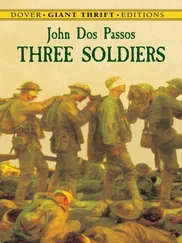At Belfort an army headquarters was established under command of General Bundy and bona fide preliminaries set in motion for an eastern drive to coincide with the imaginary movement against Metz from Thiaucourt. Twentyfive heavy tanks were brought up by night and went clanking in and out of patches of woodland where they would be heard by boche sentries across the lines. Preparatory raids and reconnaissances were made. An American Intelligence colonel was careful to drop a brand new wellmarked sheet of carbonpaper, from a letter to Pershing describing how all was in readiness for the offensive, in the scrapbasket in his room at a Belfort hotel where it was promptly scooped up by the German espionage.
Meanwhile correspondents were given false leads, a press bureau was set up in Nancy to cover the attack, and the Allied wireless, using an easily decipherable code, started talking about the formation of an American Tenth Army which was to spearhead the eastern offensive. Whether or not the Germans were completely taken in by this ruse de guerre , the threat was serious enough to cause Ludendorff to move several divisions into Alsace and Lorraine.
At dawn on September 26 nine American divisions, amounting to two hundred and forty thousand men, jumped off into the old nomansland of the defense of Verdun. They had quietly replaced the French holding troops during the night, while one of the heaviest artillery bombardments of the war combed the German positions. The front on which they were to advance extended twentyone miles from the Meuse to the western fringes of the plateau of the Argonne Forest where they were to keep contact with Gouraud’s Fourth Army advancing through the plains of Champagne east of Reims.
Pershing’s objective was to cut, in the vicinity of Sedan, the trunk line of railroad which furnished the Germans their chief lateral communication across their entire front from Metz to Valenciennes on the edge of Flanders. Giraud’s objective was the same railroad a few miles further west at the important highway center of Mézières.
The staffs of the hastily improvised American corps had hardly two weeks to lay their plans for the sort of operation that usually took months to prepare. Since the three seasoned divisions had not had time to struggle out through the overloaded roads from the St. Mihiel sector, the initial attack had to be made mostly by raw troops who had not learned how to protect their lives on the battlefield. They were attacking one of the most defensible regions on the western front.
The day dawned clear. For a while it looked as if the Allied airplanes would have the sky to themselves. The correspondents were invited up to watch the opening moves. From the shellshattered hump of Mort Homme they looked north and west down the Meuse valley which tapered funnelwise towards Sedan thirtyone miles away behind the misted hills. The whole great funnel was dominated by the heights on the east bank of the Meuse, where the German artillery, once it recovered from the pounding of the first bombardment, was ready to do deadly work. To the west the treecrowned promontories of the Argonne Forest cut into the valley with a series of steep ridges culminating in an occasional height. In the distant foreground, overlooking the first day’s objectives, was the ruined town of Montfaucon. Behind it was another ridge and behind that, fifteen miles away, was the hill village of Buzancy. Artillery in Buzancy would command the Meuse valley and the Sedan-Metz railroad.
At first everything seemed to go well. The Germans were almost as outnumbered as they had been at St. Mihiel. The main obstacle the American doughboys encountered was the mud in the shellchurned region of the old nomansland back of the heights that had defended Verdun. Roads had to be rebuilt foot by foot. Almost at once the infantry outran their field artillery and the tanks which were supposed to protect them.
The correspondents and the staffofficers up on Mort Homme watched with rapt interest through field glasses and telescopes olivedrab dots and lines moving forward according to schedule over the green land beyond the shellscarred area. The correspondents went back to Bar-le-Duc to write fanciful descriptions of a seven mile average penetration and of the taking of Montfaucon.
Some of them did have a qualm of suspicion before they left the observation post. A plane which they’d been admiring overhead as one of ours, made a sudden dive at them. When it opened up with its machine-guns there was no more doubt that it was a boche. Staffofficers and newspapermen crawled for cover among the pebbly shellholes.
The truth came out gradually as night came on. The Americans had broken the first German defenses, but Montfaucon was still in German hands and the American divisions were scattered helter-skelter over a terrain perfect for defense by groups of machinegunners. They had insufficient artillery and almost no tank support. Their transport was mired in the nomansland behind them. Communications had to be by runner or carrier pigeon. From an observation post in Montfaucon the Germans continued to direct withering artillery fire on the advancing skirmish lines. To the left what the doughboys called the Oregon Forest turned out to be another Belleau Wood, only on a larger scale.
Next day the 313th Infantry, Marylanders from the 79th Division, did sure enough take Montfaucon, at very great cost, but it was late afternoon before the cellars and ruins of the town and the adjacent woods had been cleared of the enemy. Even then the German strong points turned out to be on the next ridge behind. The delay in getting up artillery, due to traffic snarls on the almost impassable roads, gave the German General von Gallwitz the chance he needed to deploy his reserve divisions and to reinforce his great guns which carried on an enfilading fire from the heights east of the Meuse. To make things worse the weather became rainy.
The days that followed were hideous for the Americans. German crack divisions were brought in to mount their usual skillful counterattacks. The troops were plagued with influenza, which throughout the army was killing almost as many men as machineguns and shrapnel. The roads up into the fighting areas were hopelessly inadequate. There were never enough tanks. Food and ammunition came up by fits and starts. The posts of command kept losing touch with their advance units. By the last day of September progress had stopped. General Bullard in command of the III Corps operating in the battlescarred regions along the River Meuse, remembered it bitterly as a time of “wavering and standstill.”
Meanwhile Gouraud’s Fourth French Army, which had made a good start the first day, was slowed to a crawl by a carefully fortified German position on a chalky hill known as Blanc Mont, which dominated the western fringes of the Argonne Forest, as Montfaucon had dominated its eastern defiles.
Further west French armies were beginning to make progress in the Chemin des Dames section, the combined British and French moves towards St. Quentin and Cambrai were doing well, and in the extreme north the British and French and Belgians were meeting with light resistance as they advanced through the boggy lands in front of Ypres.
It began to be apparent that the German defenses, which the American divisions were battering themselves to pieces to break, were the pivot on which the whole German line from Sedan to the Channel was executing a gradual retirement. The manoeuvre was to pull back the armies step by step to a shorter line along the whole length of the Meuse as a door closes on its hinges.
The High Command was determined to hold the pivot at all costs.
The Wavering and the Standstill
Headquarters at Souilly was a grim place during the last days of September. A stream of orders that lashed like whips issued from the office of Pershing’s Chief of Staff. Drive forward. Drive forward. There must be no yielding in the face of counterattacks. Brigade and divisional command posts must be continually moved up to keep in touch with the fighting lines. Woe to the officer who weakened at the task.
Читать дальше












